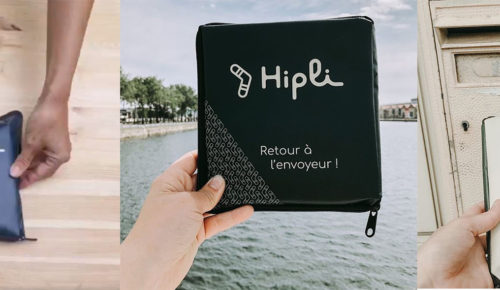The prototype: the key to your innovation!
This type of approach, where we remain flexible and adapt to customer demand, is part of both the Agile method and the Lean Startup. But why is the prototype an essential phase of your innovation project?
The prototype: the key to your innovation!
Predicting the success of an idea, product or service is more difficult than it seems. That is why it is important to ask yourself whether there is a market and whether customers will be interested in the product. The prototype plays a major role as a link in the innovation project, whether for startups or larger companies. Statistics show that 40% of start-ups fail because they have not created a product that really meets the expectations of their potential customers. The solution lies in designing a prototype, which can then be tested and improved. This type of approach, where we remain flexible and adapt to customer demand, is part of both the Agile method and the Lean Startup. But why is the prototype an essential phase of your innovation project?
What does creating a prototype involve?
Prototyping should ideally not be a single phase in the product creation process. Rather, it should be a dynamic, ongoing process that allows teams to discover, test, learn and, most importantly, validate their ideas. In the context of a project aimed at innovation, prototyping allows the product to be visualised, ceasing to be a pure concept and taking a provisional form. You will also use it to check working hypotheses and test the viability of the project.
A prototype to better visualise the project
The prototyping of an innovation project can usefully be based on digital tools. For example, various applications can be used to create sketches of mobile applications, while 3D software offers the possibility of three-dimensional rendering for the prototyping of physical objects. Once the prototype has been created, it can be shared with the various collaborators within the teams, but it can also be submitted to potential clients. However, it should be borne in mind that the first sketches of the project, while perfectly suitable for internal collaboration, may be counterproductive when shown to clients, as they may trigger criticism rather than constructive feedback.
A prototype to test the innovation project
The second step is to refine the prototyping. The idea is to create a ‘dummy’ or virtual version of the product or solution. This version should allow potential users to interact with the product. The teams involved in the innovation and the project can thus check whether the potential customers have been able to perform the desired action under the right conditions. This involves conducting a series of tests to check the usability of the solution. These tests do not necessarily provide information on the desirability of the idea, so the motivations of the users may remain largely unknown. By using methods borrowed from the Lean Startup approach, it is possible to develop communication between the various project stakeholders at an early stage and to obtain feedback from potential customers. This introduces a dynamic of improvement, where teams learn from testing.
What methods for effective prototyping?
As we have just seen, prototyping starts with rough, fast and cheap models. It supports the project and the innovation at a lower cost, and evolves in iterative loops towards more accurate, more complex, and therefore more expensive models. But in the process, the teams will have been able to check the viability of the project, they will also have been able to make the necessary corrections, so that the funds will only really be committed when the ideas have been validated. In this sense, prototyping is an indispensable process for saving resources and means. There are several methods that can be used for successful prototyping, and these are designed to provide valuable information about target customers, test assumptions, select competing ideas, and most importantly, develop an understanding of user expectations.
Using sketches and diagrams
Sketches and diagrams are useful at the beginning of the prototyping process. This approach helps to illustrate ideas. Even simple illustrations are a first step in prototyping and allow teams to better discuss the project. In this sense, sketches serve as a support for innovation. Many teams use diagrams or mind maps to structure their thinking and creative process.
Creating storyboards
Storyboarding is used for early prototyping to visualise the customer journey or how users would relate to a problem or product. The series of images helps to imagine the user experience and to see it as a process in motion. It is used during the prototyping process to gain an empathetic understanding of potential customers.
The mockup technique
Mockups are simple, tangible models that are created primarily for presentation purposes. They are demonstration models. Physical products can be 3D printed in scale or life-size. Virtual products, such as IT solutions, will be presented in a rough form, but with a good overview of the functionality. The prototype model can be of the whole product or only a part of it.
Use explanatory videos for prototyping
Videos can be used to present the product in different situations and to show potential customers how it works and what the benefits are. The product does not have to exist in its final form. Constructive criticism can therefore still help to advance the process and the design.
By making good use of these different methods, it is possible to develop an effective prototyping process, leading to a progressive improvement of the product, and above all to its better adaptation to the users’ expectations. As we have seen, developing a prototype and testing it with the Agile method and Lean Startup gives you every chance of succeeding in your innovation project.









